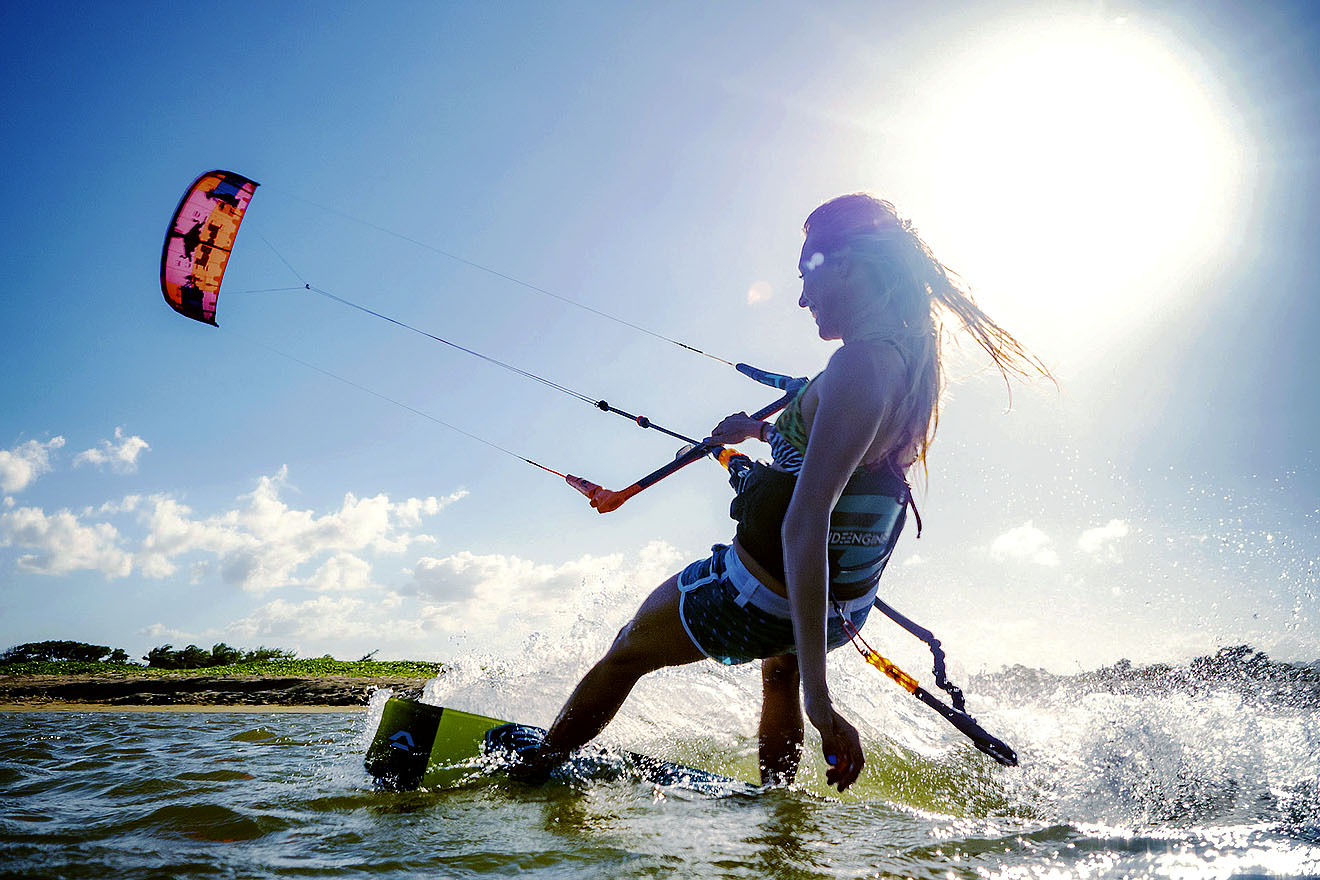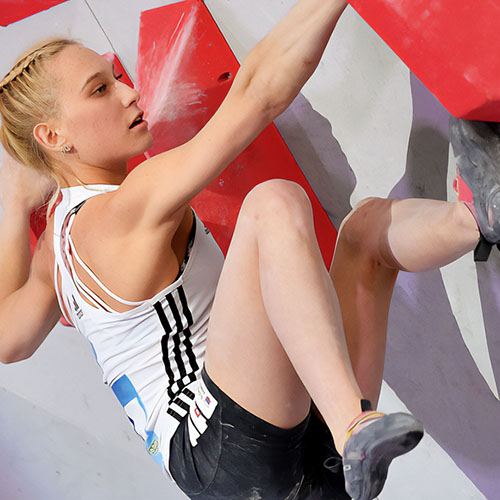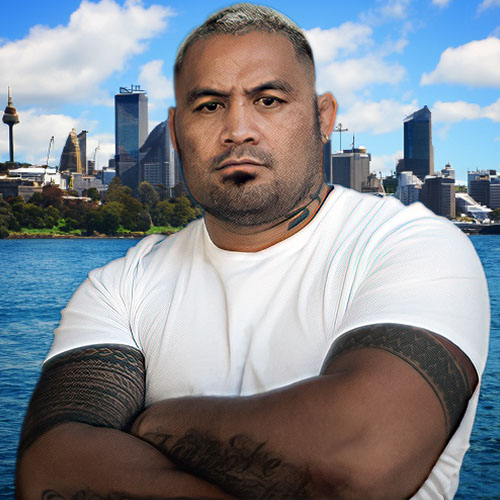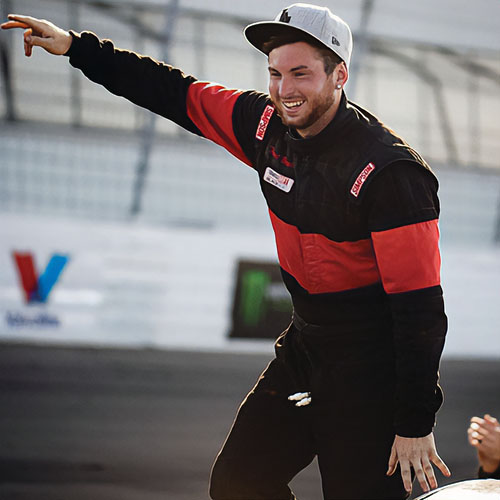Kiteboarding legend, activist, and entrepreneur Susi Mai is the ocean’s greatest champion.
Sisu Mai — professional kiteboarder, environmental activist, and entrepreneur—has spent her life living by the ocean, loving the ocean, and soaring above it.
This German-born daughter of pro windsurfers got to know the Caribbean first, after her family moved to seaside Cabarete in the Dominican Republic. Rebellious as a girl, Mai turned her nose up at windsurfing because that’s what her father did when he wasn’t running a B&B with Mai’s mom.
A fluent speaker of Spanish, German, and English, Mai was a teenage beach bum, with a perpetual sprinkling of sand in her blonde hair. It wasn’t until she was getting ready for college that she discovered the sport that would catapult her to fame.
“It was the early 2000s. I remember there was this French guy kiteboarding on the beach,” she tells Penthouse by phone from her home in Hawaii. “He was flying through the air. I immediately saw this as windsurfing, but lighter, better, and much cooler.”
Mai says the way kiteboarding harnesses the wind, plus the sport’s risk, is what appealed to her, and she began riding with boys on the beach. She had no idea of her skill level or how she compared to other female riders. And she didn’t care. She fell in love with the sport.
“Kiteboarding fools you with how fun it is,” she says. “It’s about feeling in control of some awesome nature. You’re flying like a bird over water. You’re weightless. Airborne. At the same time, you’re getting this great full-body workout.”
Mai says the opportunity to compete fell into her lap. She got a wild card pass to enter the 2003 Kiteboarding World Cup, held in her Cabarete hometown. She snagged the silver medal, with world champion Cindy Mosey of New Zealand winning gold.
With a surge of confidence and a growing reputation for executing daring, sky-high tricks, Mai went on to win Red Bull’s “King of the Air” competition in 2003, 2004, and 2005. Just like that, she found herself a sponsored tour athlete, competing, training, and performing nonstop in what she now calls a “hamster wheel” for six years.
But ultimately, knee injuries, three surgeries, and post-op bedrest forced Mai to look beyond the world of kiteboarding competition. “My injuries were downers, but they taught me something,” she recalls. “It’s a very strange feeling to have your entire existence taken away.”
After her first injury, Mai devoted herself to designing a kiteboarding line specifically for girls, called Siren Series by Susi Mai, with financial backing from her then-sponsor, Cabrinha. “I was literally designing kites from my hospital bed,” Mai laughs.
But it was earlier, in 2006, when she met venture capitalist Bill Tai, a former computer-chip designer. Kiteboarding had just taken off with Silicon Valley types, including Google founders Sergey Brin and Larry Page. Tai had kiteboarding friends coming to Hawaii and needed a teacher.
“There’s a lot of common ground between someone who can start their own company and someone who can kiteboard,” Mai explains. “You have to be able to do ten things at once and take risks. Also, kiteboarding is inherently geeky, when you get down to the aerodynamics of it. Brainy people love it.”
Legend has it that Tai emailed her saying, “Hey Susi, together our names spell MaiTai. We need to do something on it!” The two got together and formed a Hawaii-based event, MaiTai, that gathered kiteboard-loving executives at Twitter, Facebook, Google, and other tech firms for hands-on instruction from pros like Mai and her friends.
The exclusive event also featured top athletes, investors, and innovators who shared an addiction to high-risk thrills. When not in the water, these people cooked up new deals and raised funds for ventures like the big-data company Treasure Data, and the app Voxer. They also organized ocean-conservation initiatives such as shark-tagging.
“There was a great synergy between these two groups of people that made a lot of sense,” Mai remembers. Soon, other money-men who loved kiteboarding were knocking on Mai’s door, including Virgin Group founder Richard Branson.
“I basically became the informal kite caddy for the Branson family,” Mai jokes, adding that the whole clan is filled with risk-takers who love the challenge and adrenaline rush of kiteboarding. “It was my job to make sure they all stayed alive.”
After a ten-year run, MaiTai is giving way to new ventures and collaborations. Mai’s latest endeavor, The Ocean Summit, organized with marine conservationist Jeremy McKane, gathers a diverse group of scientists, policymakers, tech investors, athletes, and artists who share a passion for ocean conservation and environmental activism. The location is Branson’s Necker Island, where they all brainstorm on how to help protect the ocean.
As kiteboarding continues to grow in popularity, Mai hopes her crossover work with tech titans and ocean conservationists will make a difference in the world while enhancing the sport she adores. Laughing, she says, “For the first five or six years of my career, I was just explaining to people what kiteboarding actually was. They thought I filled my kite with helium. Maybe we didn’t quite become the next golf, but our community has made a difference.”























